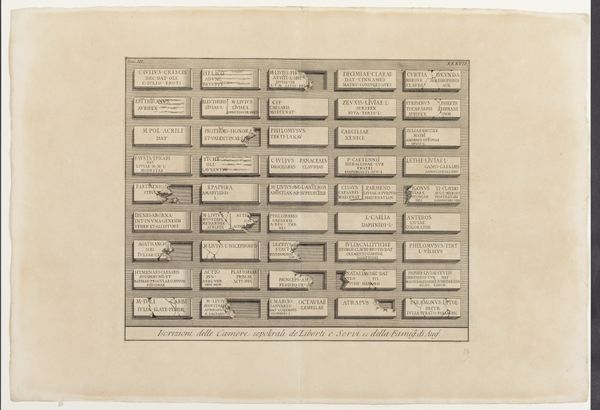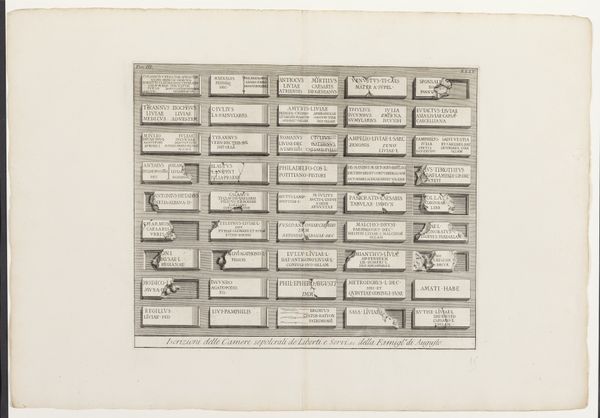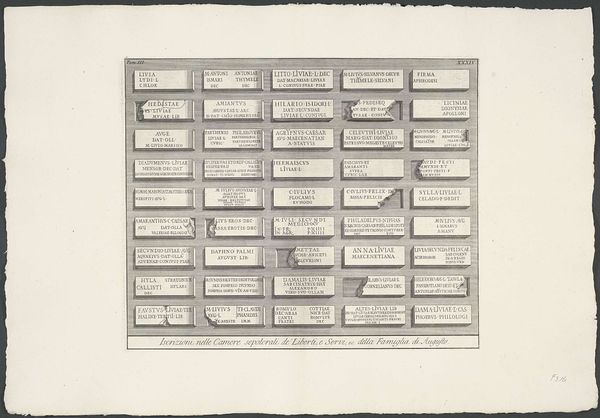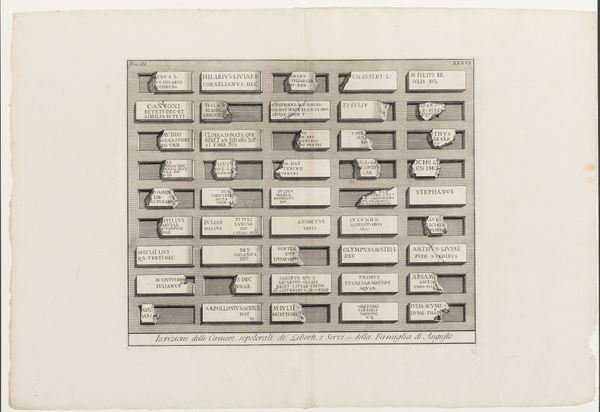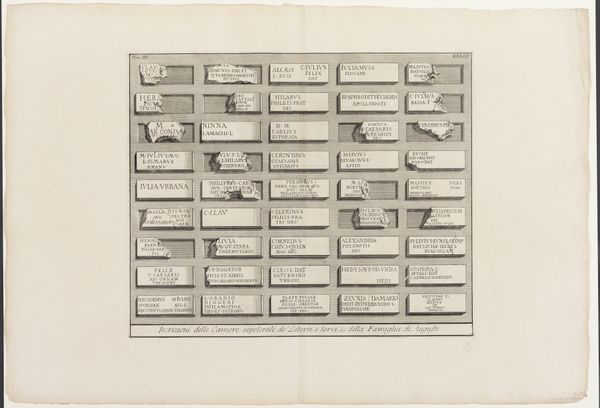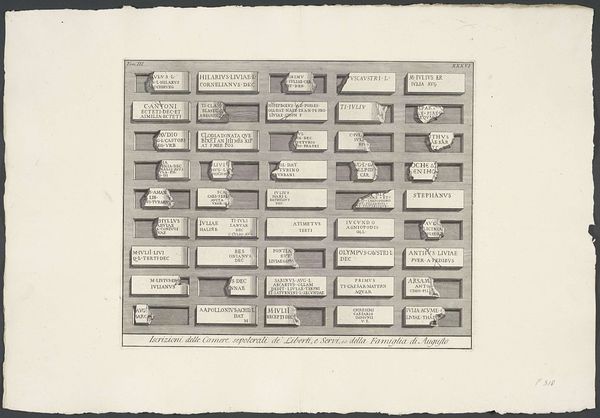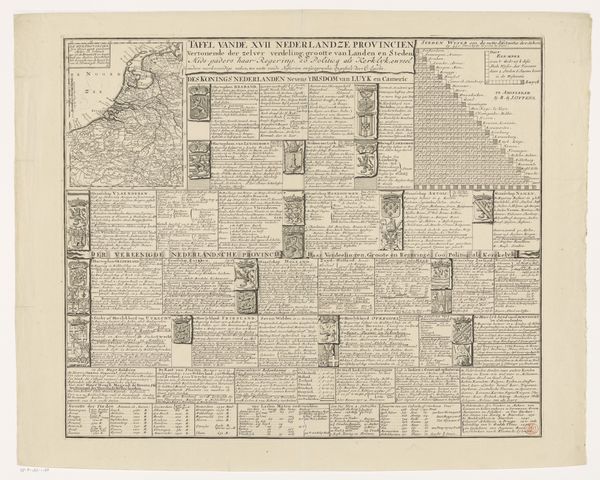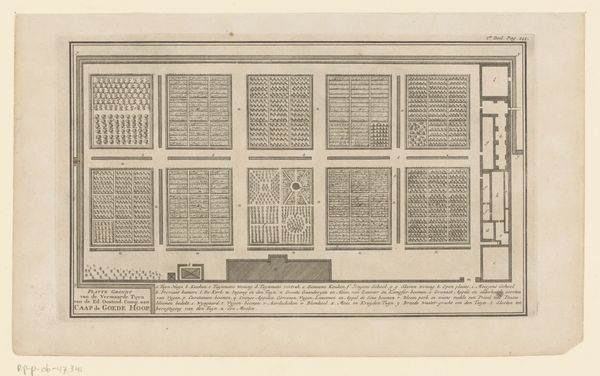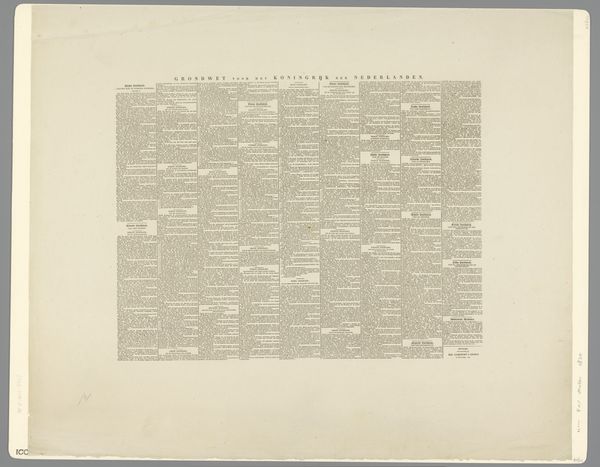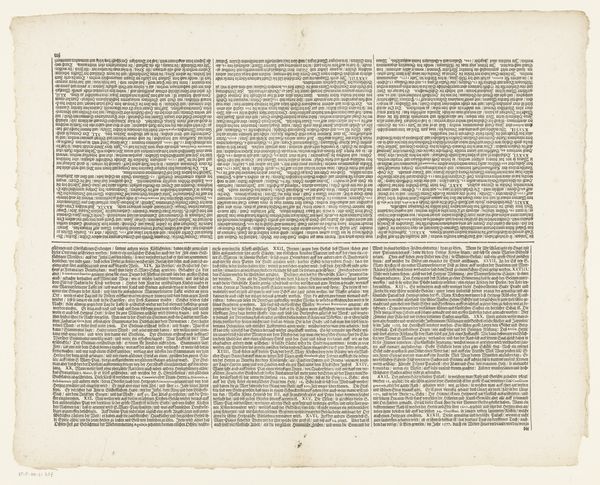
Iscrizioni delle Camere sepolcrali de' Liberti e Servi, ec. della Famiglia di Augusto, XXXII 1756 - 1785
0:00
0:00
graphic-art, print, etching, paper, engraving
#
graphic-art
# print
#
etching
#
paper
#
ancient-mediterranean
#
history-painting
#
academic-art
#
italian-renaissance
#
engraving
Dimensions: 378 mm (height) x 480 mm (width) (bladmaal)
Giovanni Battista Piranesi created this print, Iscrizioni delle Camere sepolcrali de' Liberti e Servi, ec. della Famiglia di Augusto, using etching in the 18th century. It presents a grid of inscribed tablets, records of names, and epitaphs found in the tombs of freedmen and servants of the Roman Emperor Augustus' family. Piranesi, an Italian artist, was deeply interested in Roman antiquity. His works often reflect a fascination with the grandeur and the social history of ancient Rome. This print is more than just a record; it reflects the 18th-century’s interest in classifying and understanding the past. It also speaks to the social hierarchies of Roman society, where even in death, the distinctions between slaves, freedmen, and the elite were carefully marked. Understanding this image involves historical research into Roman social structures, funerary practices, and the role of epigraphy in preserving memory. By looking into such resources, we can understand art as something that is contingent on social and institutional contexts.
Comments
No comments
Be the first to comment and join the conversation on the ultimate creative platform.
